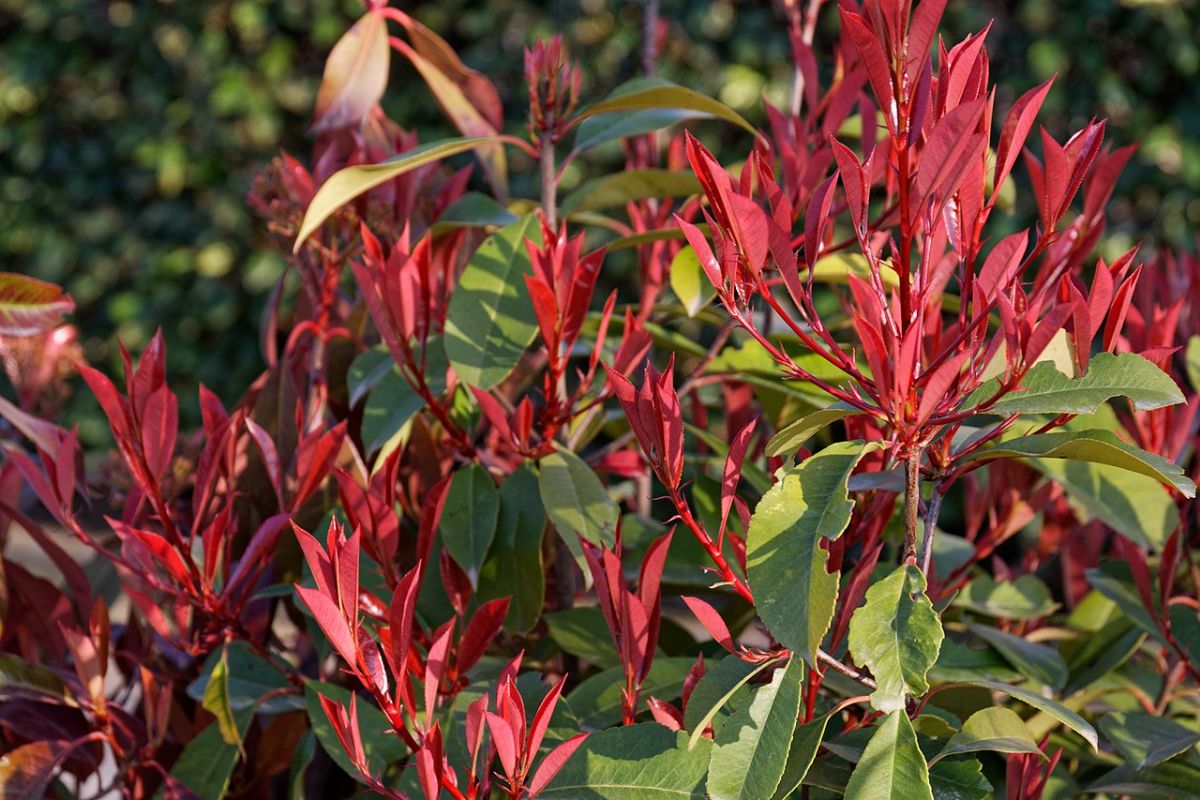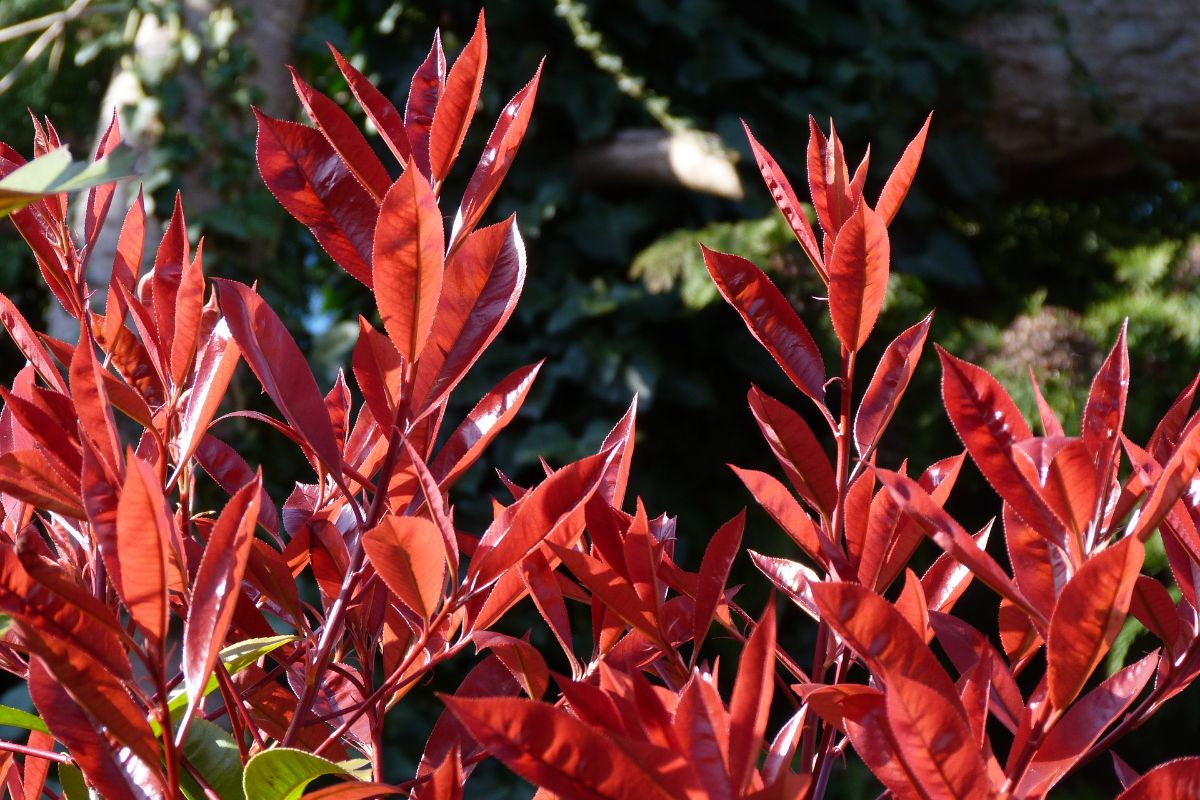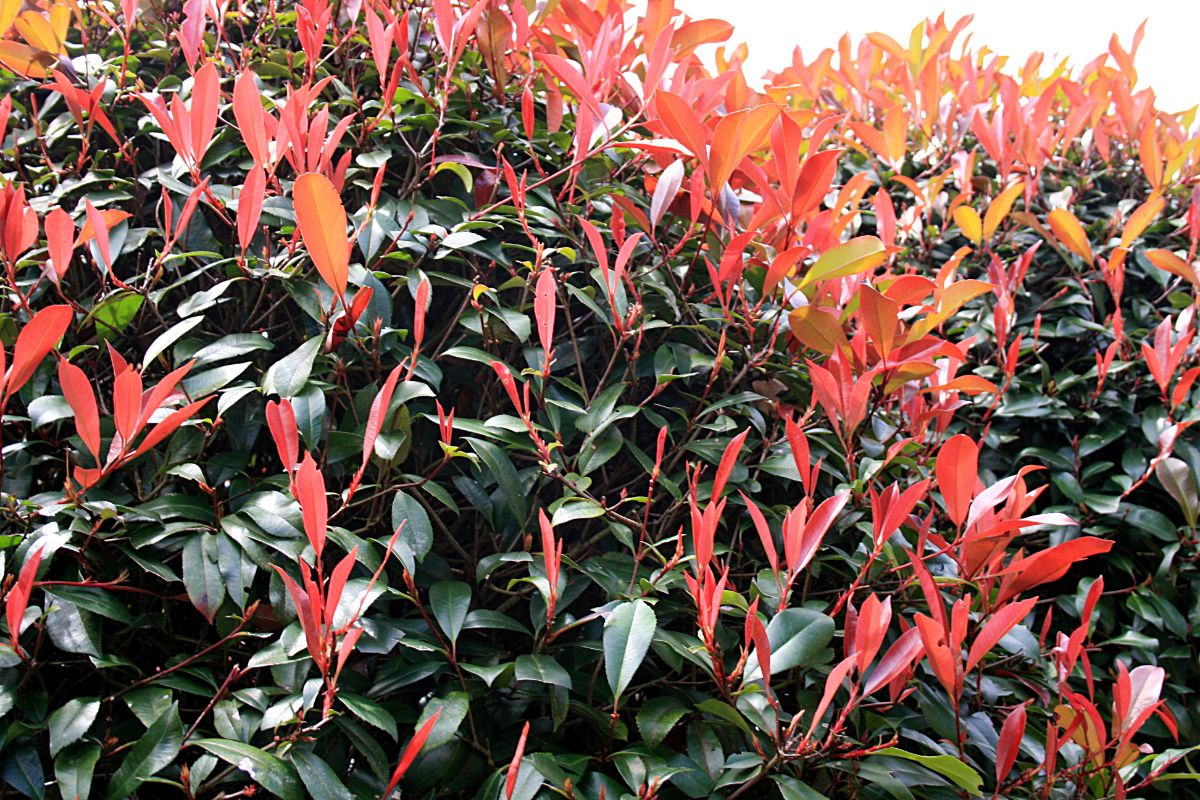
One of the most colorful shrubs that can give your garden without any doubt is the Photinia red robin. Its care is very simple and it will create a red design of the most beautiful that exists.
But What is the Photinia red robin? What care do you need? Is it resistant or does it need to be monitored continuously? We will explain everything to you below.
What is the Photinia red robin

La Photinia red robin, Also known as Photiniafraserii red robin it is a bush that It is characterized by the leaves that, instead of being completely green, are in garnet tones. In fact, only when the leaves are ripe are they green, meanwhile, that is, while they grow, they are red and attract a lot of attention.
It has a slow growth, and the formation pruning is important so that it takes shape. It does not have a considerable height (no more than 1,5 meters), which is why it is used as a shrub for gardens and parks or to create small fences with them. Of course, it can also be kept in a pot and many dare to create fun shapes with this plant.
As for the stem, if you look at some images of this bush you will see that it is red, and as it matures the color also changes as in the case of the leaves.
In the spring time it blooms with small white flowers with a yellow center. Normally from May, the flowers will give way to the fruits, which will ripen in the summer and will be blue. It is not edible for humans, although you may see birds feeding on it.
Caring for the Photinia red robin

If you want to have one Photinia red robin In the garden, or even in a pot, the first thing you should know about the plant is that it is very easy to care for. What's more, It is not too expensive and you can find it in nurseries and stores almost formed, which will save you a lot of time. Its resistance and the few pests and diseases, as well as the ability to hide vision 100% (for example between neighbors) make it perfect.
But what care do you need?
Lighting and temperature
We start with the type of light that this plant needs. Taking into account that its origin is the Asian continent, specifically the areas of Thailand, Japan and India, although they can also be found in North America, the lighting it requires is in full sun but with certain hours of shade. That is, in Spain, especially in the south, it is better to put it in semi-shade than in the sun because it can be too much. It is important that you do not place it in a windy place, because it does not support it and it can kill the plant very easily.
Regarding temperature, its own origin tells us that it does not tolerate "extremes", that is, neither too cold nor too hot. The ideal temperature for this shrub is between 10 and 18 degrees.
This does not mean that it cannot withstand some frosts or high temperatures, but if it is a constant it can suffer a lot.
Earth
La Photinia red robin It is not a plant that is demanding with the type of soil that you are going to provide it, but it is true that, if you want it to grow strong and fast, it is better to give it a substrate that is fertile and rich in nutrients, in addition to providing organic mineral fertilizer that works very well.
In fact, when planting, whether in a pot or in soil, it is important to add a little rooting and / or compost to make it take root more easily.

Irrigation
La Photinia red robin It is not a shrub that needs abundant watering. But this will depend on the area where it is placed or the temperature.
In general, it is said that in summer you only have to water it 2-3 times a week if it is planted in soil; 3-4 times if it is in a pot. Meanwhile, in winter it will be only once a week in the garden or 1-2 times in a pot.
But if the climate is too hot (for example in the south of Spain) it is very likely that you need more frequent waterings.
Fertilizer
Choose fertilizer rich in phosphorus, because it is very good for this shrub, especially the first year of life because it will make it grow faster and you will ensure its survival wherever you have planted it.
Pruning
Pruning is one of the activities you must do if you want to control the shape of the bush. If you want to make hedges with them, or to cover part of a wall, etc. then you will have to perform a Maintenance pruning normally throughout the year and leaving the winter season for a more drastic one.
What is maintenance pruning? Basically in keeping the shape you want this bush to take. And for this you will have to cut the branches that protrude from the formation you want. For example, if you want it to be rectangular in shape, anything that comes out of the rectangular sides will need to be cut off. At first a pair of scissors will suffice, but as it grows you may need an electric saw or similar to cut in line more quickly.
Diseases and pests
As we have told you before, the Photinia red robin It is a very resistant plant that hardly has pests. In this case, What can affect you the most are the mushrooms, which will cause serious damage to your leaves.
If this happens, the way to treat the plant is through systemic fungicides, as long as the infection is caught in time, otherwise the branches and diseased parts would have to be cut so that it does not get worse.
And how can fungi appear? Most of the time it happens due to poor care, especially when it comes to watering. If we go through this there is a greater probability of the appearance of fungi (which at first you will notice as darker red spots that will turn into gray).
As you can see, the care of the Photinia red robin they are very easy. If you dare, you will see that your garden, or your pot, soon becomes a beautiful jewel among your plants.